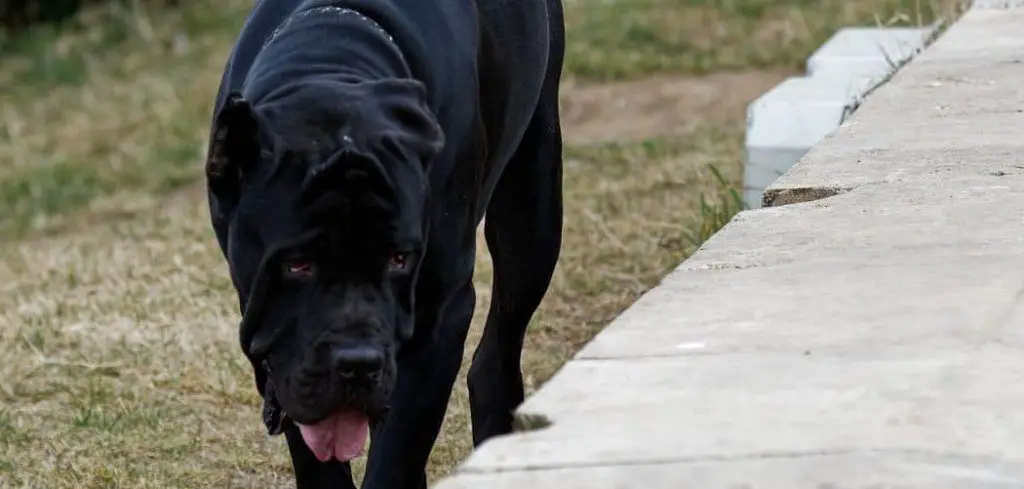Noticing your dog limping, even when they show no other symptoms, can be worrying. Sometimes it looks mild, while other times it may appear suddenly after exercise or rest.
Even without additional signs of illness, limping can signal an underlying issue that needs attention.
We outline the common causes of dog limping with no other symptoms, what you can do at home, and when to seek veterinary help.
Dog Limping No Other Symptoms — Why It Happens
When a dog is limping with no other symptoms, it often points to a localized issue with the limb rather than a systemic illness. Injuries such as sprains, strains, or minor cuts are common culprits. Conditions like arthritis, hip dysplasia, or patellar luxation can also cause intermittent limping without making your dog seem otherwise unwell.
In some cases, growth-related problems or even early joint disease may be behind the limp, even when your dog is eating, drinking, and behaving normally.

Dog Limping No Other Symptoms: Common Causes
Soft Tissue Injury (Sprain or Strain)
A sudden limp without other signs often results from a soft tissue injury. Your dog may have twisted a paw, strained a muscle during play, or overexerted themselves while running.
You might notice your dog limping more after activity, but still eager to eat, drink, and interact normally. While some minor sprains heal with rest, repeated limping can mean deeper tissue injury that needs medical care.
Read more: Dog Panting and Can’t Move Back Legs (When it’s become serious)
Paw Pad or Nail Injury
Sometimes the cause is right underfoot. Small cuts, abrasions, or cracked paw pads can cause enough pain to make a dog limp. Broken or torn nails are another common reason.
Even if your dog seems otherwise fine, a sore paw can make walking uncomfortable. Checking between the toes for debris or injuries is often the first step when a limp appears suddenly.
Arthritis or Joint Disease
For older dogs especially, arthritis may present first as a mild limp with no other symptoms. Dogs may favor one leg after sleeping or when the weather is cold.
Joint disease often causes subtle, intermittent limping long before more serious mobility issues develop. Catching this early gives your vet more options to slow progression and ease discomfort.
Patellar Luxation
Common in small breeds, patellar luxation happens when the kneecap slips out of place. Dogs may suddenly pick up a leg and limp, then resume walking normally within seconds.
Even though it may look like nothing is wrong, repeated luxation can lead to arthritis and worsening pain over time. Early diagnosis is important to manage this condition effectively.
Hip Dysplasia
In large breeds, hip dysplasia may cause intermittent limping with no other immediate symptoms. Dogs may limp after vigorous play, then seem completely fine later.
This joint abnormality puts strain on the hips and can cause long-term pain if left untreated. Even in the absence of obvious illness, a limp may be an early indicator.
Bone or Growth Plate Issues
In puppies and young dogs, limping without other symptoms can be linked to growth plate injuries or conditions like panosteitis (growing pains). These issues may come and go and often affect large, fast-growing breeds.
Because growth plate injuries can affect long-term bone development, veterinary evaluation is essential when a young dog develops unexplained limping.
What to Do If Your Dog Is Limping With No Other Symptoms
If your dog starts limping but otherwise seems fine, the first step is to allow rest and limit activity. Avoid long walks, running, or jumping, as this can worsen injuries.
Gently check the paw and leg for any cuts, swelling, or lodged debris. If you find a minor scrape, you can clean it with mild antiseptic, but avoid applying human medications.
If the limp improves within a day or two with rest, it may have been a mild strain. However, persistent or worsening limping always requires veterinary attention.
Comfort your dog and provide a soft resting area. Keeping them calm will help prevent further strain until you can get a professional assessment.
When to Call or Visit Your Vet
You should seek veterinary care right away if your dog’s limp:
Persists for more than 24–48 hours.
Becomes worse or shifts between legs.
Is accompanied by swelling, heat, or visible pain when touched.
Follows a fall, jump, or accident.
Occurs in a puppy, since growth plate injuries need prompt care.
If your dog refuses to put weight on the leg at all, or cries when moving, this is an urgent situation that should not wait.
Read more: Dog Lethargic No Other Symptoms (Here’s Why)
Key Takeaway
A dog limping with no other symptoms can still signal an underlying problem that needs attention. While some causes are minor and may improve with rest, others like joint disease, patellar luxation, or hip dysplasia can progress if untreated.
Providing rest, checking for visible injuries, and monitoring closely are good first steps. But if the limp persists, worsens, or causes obvious discomfort, your vet should examine your dog.
Catching the cause early helps ensure your dog stays active, comfortable, and happy for years to come.
